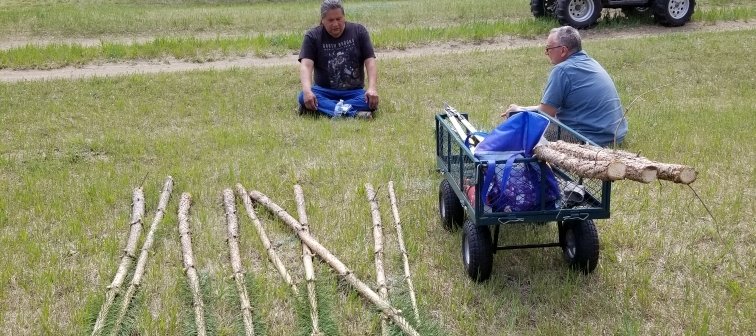Room for Exploring Cultures Together at the Reading Place

A new interactive program, Exploring Cultures Together, is helping to increase children’s cultural awareness through access, exposure, instruction, displays, handson activities and appropriate culturebased readings in an environment that helps share aspects of different cultures.
Exploring Cultures Together offers a range of culturallythemed rooms at The Reading Place, Child and Youth Development by Reading Inc., located in the Battlefords, engaging participants in different cultures. Children can select culturebased books at The Reading Place and read them in the culture room of their choice, allowing them to really immerse themselves in that culture, including visual exposure to all the cultural items in the room. The rooms, currently under development, will be open fall 2021.
According to Cheryl Carley, president, The Reading Place, at this point a room that celebrates First Nations cultures is close to completion, with the focal point being a real tipi, complete with artificial grass, campfire, 3d effect trees, bushes, animals and a creek. Extensive partnership has already taken place with Indigenous organizations and individuals and will continue. Other rooms include the journey New Canadians have made and what they have left behind. “It is about honouring everyone’s journeys,” she explains.
The Exploring Cultures Together program hopes to teach children to share, learn, appreciate and respect their own and other cultures in a way that is very real for them and embeds in their minds and hearts for a lifetime. The resources are aimed at children Grades 1 to 4. “By entirely focusing on children in these grades we are catching them in their formative years by immersing them in different cultures in a very realistic manner,” Carley notes. “Children are still learning about their world and it is amazing how fluid they can be regarding acceptance of others if given the right environment. We aim to guide children to a deeper crosscultural understanding and appreciation of other cultures.”
Reading is a key part of this learning experience. “There are so many cultures and they all have amazing things about them that are exciting to learn. That is what we want to bring to the children,” says Carley. She anticipates that individual and group visits to The Reading Place during the year will be in excess of 3,000 children or more. “We will be highlighting First Nations and Filipino cultures for the entire year. Specific cultures will be highlighted for a month each.”
Besides reading, children will also create cultural items they can take home; listen to stories; learn dances and songs; learn about specific holidays; participate as assistant presenters; and directly interact with culture leaders. Through interaction and dialogue, creating projects together and exchanging ideas, Carley explains that, “children will become a big part of the presentations. The experience will become a part of them and something they value.”
During Culture Days in 2021, the group plans to take cultural presentations into schools and the local Boys and Girls Club, encouraging students to trace their own ancestry. Children can mark their country or place of origin on a large map, which will become part of a display in the Celebration of Culture room at The Reading Place.
“Covid19 definitely slowed us down, but did not stop us,” says Carley. “Currently we are retrofitting the rooms into their cultural themes. Exploring Cultures Together will be an ongoing project.”
The Reading Place hopes to open children’s eyes to other cultures. “If we can help children to admire and respect other cultures at a young age, there will be way less likelihood they will grow up with racist opinions. Knowledge is such a huge element in changing people. Focusing on children in grades one to four will help combat racism and create a deeper crosscultural understanding and appreciation of cultures. Only by sharing and learning will these individuals come to appreciate and respect their own and other cultures.”
This project was supported through SaskCulture’s Multicultural Initiatives Fund.




